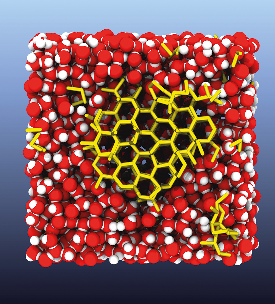EPJ E Review - Watching crystals grow
- Details
- Published on 08 August 2016

© Philipp Geiger
Crystallization, a typical self-organization process during which a disordered state spontaneously transforms into an ordered one, a crystal, usually proceeds by nucleation and growth. In the initial stages of the transformation, a localized nucleus of the new phase forms due to a random fluctuation. Most of these small nuclei disappear after a short time, but in some rare cases a crystalline embryo may reach a critical size, after which further growth becomes thermodynamically favorable and the entire system is converted into the new phase.
In this EPJ E review paper, Jungblut and Dellago discuss several theoretical concepts and computational methods to better understand crystallization. More specifically, they address the rare event problem arising in the simulation of nucleation processes, and explain how to calculate nucleation rates accurately. Particular emphasis is placed on discussing statistical tools to analyze crystallization trajectories and identify the transition mechanism.
S. Jungblut and C. Dellago (2016),
Pathways to self-organization: Crystallization via nucleation and growth,
European Physical Journal E, DOI: 10.1140/epje/i2016-16077-6





